City of History
San Juan Bautista located in San Benito County, California is a quaint destination rich in history and seemingly undisturbed by modern times. Primarily known for Old Mission San Juan Bautista, the historic town boasts many specialty shops, art galleries, antique stores and numerous restaurants. The State Historic Park (adjacent to the Mission) includes many historic buildings, gardens and grounds open to visitors. San Juan Bautista is home to reknown El Teatro Campesino Playhouse presenting stage plays throughout the year, but best known for their Christmas theatre productions live in the Old Mission beginning every November.
Of special interest is St. Francis Retreat on Historic Rancho San Justo located just 2 miles from the Mission. The 1797 Mission San Juan with it's vast ranch land was divided into "ranchos" in 1833 with Rancho San Justo covering 34,615 acres. It was home to many families and working vaqueros handling sheep, cattle, horses and livestock. The Mission remained the "heart" of this area with rancho residents travelling by cart, wagon, horseback, burro and foot to the many ceremonies and festivities each week. San Juan today reflects many of the old traditions and adobe buildings from the Mission and Rancho eras. In 1947 Franciscan Friars purchased a 73 acre portion of Rancho San Justo with its historic homesite and structures for use as a retreat center. Today it remains home to Franciscan Friars and staff with facilities for educational classes, organization meetings, along with non-denominational religious and group retreats and individual spiritual solitude. (more details at www.stfrancisretreat.com)
Often referred to as the "hidden jewel" of California, San Juan Bautista was designated by the Federal Government in 2007 as a "Preserve America Community," a program created in 2003 to encourage and support efforts in the U.S. cultural and natural heritages, America's past, strengthen regional identities and local pride, increase local participation in preservation and improve support for economic vitality of communities. The Program is linked to potential Federal grant funding available to support efforts in sustaining historic sites, educational opportunities related to tourism. There are reportedly only 261 communities (11 in CA) in 43 states that have the title "A Preserve America Community".
The surrounding San Juan Valley with its rolling hills and native oaks includes historic landgrant properties, cattle ranches, agricultural land (many organic farms) producing apples, lettuce varieties, peppers, onions and other crops. Businesses and residents are committed to preserving the area's rich soils by nurturing and caring for the land generation after generation. Explore the many trails at Fremont Peak State Park; hike or horseback ride the Juan Bautista de Anza National Historic Trail; tour the cemetery recognizing historic names from the past; bicycle or bird watch along rural roads; picnic in parks and enjoy the City of History!
Of Background Interest.....
Prior to the Spanish arriving in California the Mutsune Indians occupied what is now San Juan Valley, with a main village on the eastern edge of current city limits. Other Mutsune rancherias were in the San Juan Canyon and foothills to the east and west of town. Mutsunes were hunters and seed gatherers, living in bee-hive style huts of natural fibers. They were not considered an aggressive people. The last full-blooded Mutsune died in January 1930 and is buried in the Indian Cemetery at the Old Mission.
The Spanish padres during 1975 began their trek north in hopes of establishing pueblos by introducing the Indians to ways of the white man and creating structures which would become mission communities or new territory of Spanish colonies. San Juan Bautista Mission was founded in 1797, the 15th in the series of 21 California missions. Mission history also includes a time of rule by Mexicans following their successful revolution in 1822. Mission life began to change with unrest among new government, padres and Indians. San Juan Bautista was secularized in 1835. Mission era ended; the following years became known as Rancho Days. Much has been written about this era - the working vaqueros, herds of cattle, horses, lifestock, the markets, fiestas, bullfights, and war turmoil. The U.S. took control of California from Mexico in 1846 with possibly the first American flag of victory in California being staked at Gabilan Peak by General Fremont. Thus began another era and an increased population interested in livestock, farming and business to serve the traders and travelers through San Juan (in 1905 name became San Juan Bautista). Many people arrived from the east to settle in the San Juan Valley with it's fertile land for farming, plentiful game for hunting, access to water and mild climate all enticed new residents. Hundreds of notable names are recorded in history and still recognized today as part of San Juan Bautista's heritage.
Indians, Spanish, Padres, Mexicans ,Vaqueros, left a strong legacy with the missions, adobe structures, markets, festivals, rodeos, music, documents and theatre we enjoy today. San Juan Bautista is a cultural crossroad to California's past - it is the City of History. Welcome!
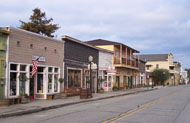 |
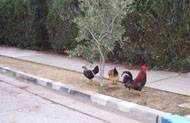 |
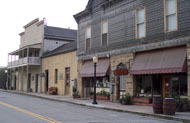 |
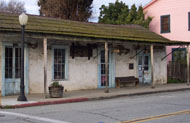 |
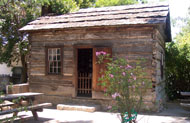 |
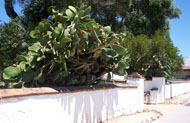 |
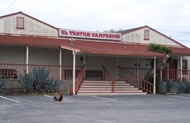 |
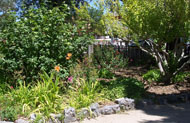 |
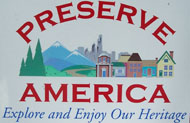 |




